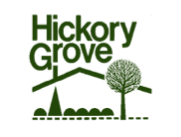We’re naturally always concerned about the outside of the house. After all, that’s our responsibility as landscape contractors. But shouldn’t we consider what our clients see from the inside?
During your walk around the house make a point of asking homeowners what rooms are which from the outside. They’ll most likely invite you in so you can appreciate what they see (and feel) from the different rooms.
This is by no means a new concept. Attentive architects will design and orient homes to capitalize on views from the inside out.
In this post I want to talk about the role ornamental trees can play from inside the home and some of the particular ones you can use for this purpose.
 Ornamental Trees Are Like Swiss Army Knives
Ornamental Trees Are Like Swiss Army Knives
Smaller and mid-size ornamental trees are really versatile in landscape design. They’re certainly useful on large scale properties, and frankly indispensible on small scale ones.
When properly chosen an ornamental tree can give canopy or ceiling to a space without taking up a lot of room. Used in relative close proximity to a building they can help soften parts of the architecture.
Design / Sales Tip: A complete landscape project can be a huge expense. “Phasing” the project is a common way to break up the cost. You can recommend installing the trees as part of phase 1. Since the trees have such impact on the landscape, planting them early gives an immediate effect; a lot of ROI for the first installment on the landscape. Plus it gives these key design elements a chance to establish early and get growing.
Branches So Close You Can Almost Touch Them
In the picture above is Flowering Dogwood planted approximately 7′ from the foundation of a raised porch area.
This ornamental tree should grow 18 – 20′ in height and 14 – 16′ in width. And because the porch is open and recessed the dogwood should not encroach into the side of the home.
In the picture below you can see the view the homeowner has from her kitchen window. The closeness of the branching (and flowers in spring) are almost part of the interior decor. Birds will sometimes use the tree as a perch, especially to feast on the glossy red fruit in early fall. She’s told me several times how much enjoyment she gets year-round from that dogwood.
Here are some of the ornamental trees to use near the home that have benefits from the inside too.
- Flowering Dogwood – Well of course. It’s probably one of the best for this use. However, flowering dogwood can have plant health issues such as anthracnose and borers. Just make sure you “site it” carefully to avoid stressing the plant. Approximate tree width 14 – 16′.
- Kousa Dogwood – This dogwood is more resistant to anthracnose than standard dogwood and flowers typically 3 weeks later. Another nice feature: Its trunk becomes multicolored with shades of brown, tan and gray. Approximate tree width 14 – 16′.
- Rutgers Hybrid Dogwoods – These dogwoods are from a cross-breeding program started by Dr. Orton at Rutgers University. These hybrids share the traits of standard dogwood and kousa to produce superior plants in terms of plant health. They’re a great choice. Approximate tree width 14 -16′.
- Japanese Maple – There are numerous varieties of this specie so be aware of the particular plant’s characteristics you’re considering. Their branching and trunk architecture is unmatched. Approximate tree width 14 – 16′ (varies among the many cultivars).
- Paperbark Maple – Has an upright and oval form. As the tree matures the bark starts to exfoliate showing beautiful shades of red-brown and cinnamon. Approximate tree width 14 – 16′.
- Japanese Stewartia – Somewhat pyramidal in shape and has camellia-like flowers in June/July. This later-than-spring flowering always gets a nod from homeowners. Approximate tree width 10 – 14′.
Plant Characteristics To Look For
Some of the characteristics to look for when siting an ornamental tree close to the house and to be viewed from the inside are:
- An open branching structure. Avoid trees that have dense foliage and branching.
- Moderate growing that can be easily pruned to control and “influence” branching. (We’ll talk more about directing growth by pruning in future posts).
- Attractive features like flowering, leaf shape and color, trunk color and texture, etc.
Plant health and hardiness are certainly considerations as they would be for any of your plant selections.
You’ll notice I’ve mentioned approximate plant width several times already. It’s so important you know that for each tree you consider, especially when you’re looking for the effect of branching right outside a window.
You want to space the tree from the home close to the potential radius of the tree. If you do that it will ensure years and years of enjoyment. Perhaps you’ll need to prune a bit to shape and direct the plant, but this should be minor.
The views from inside the home are important for you to consider as landscape designers and contractors. Your customers will get more enjoyment out of their landscape not only during the day, but also at night if lighting is part of your project.


emily bennette
These are some really good things to know about ornamental trees. I like that you talked about how it is important to prune the trees properly. That way you don’t ruin a the trees ability to grow fruit. It seems like it would be a good idea to have a professional do the pruning for you.